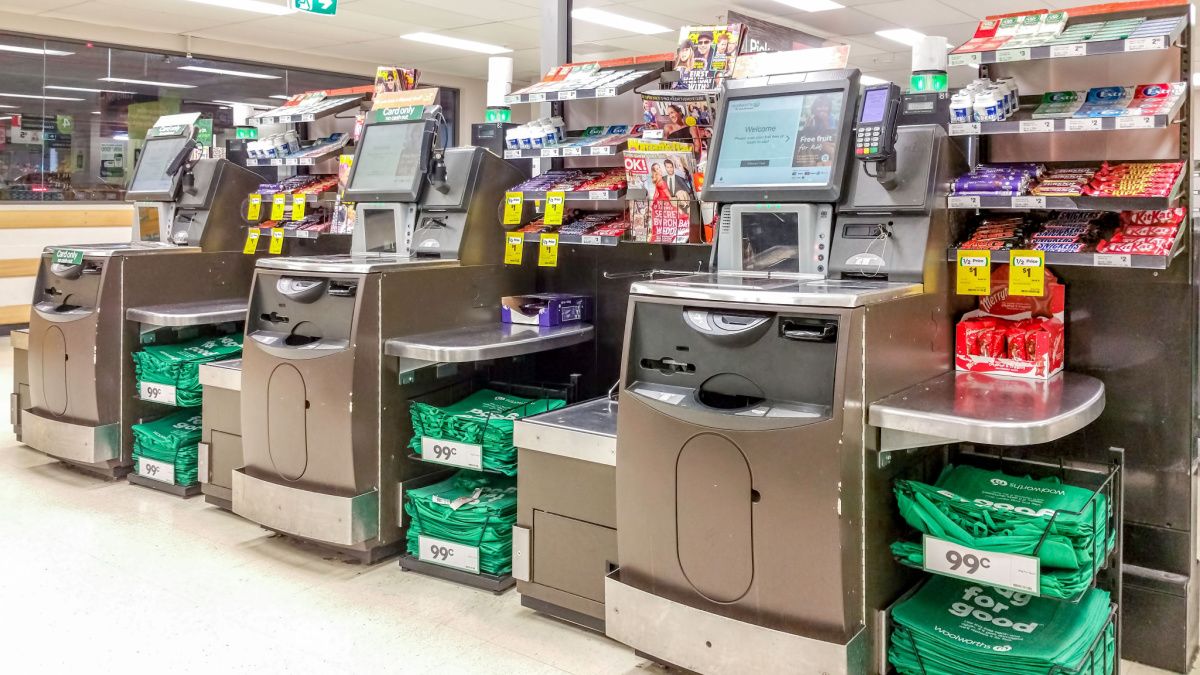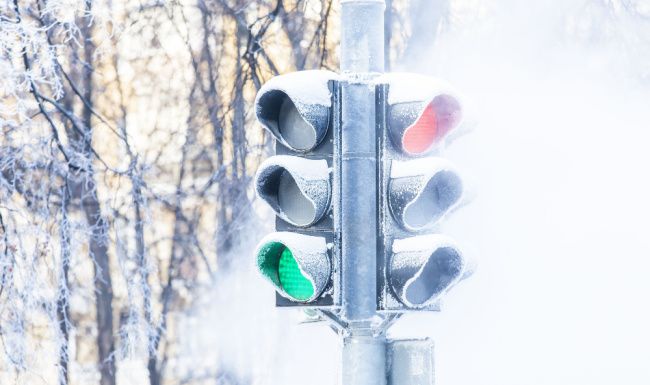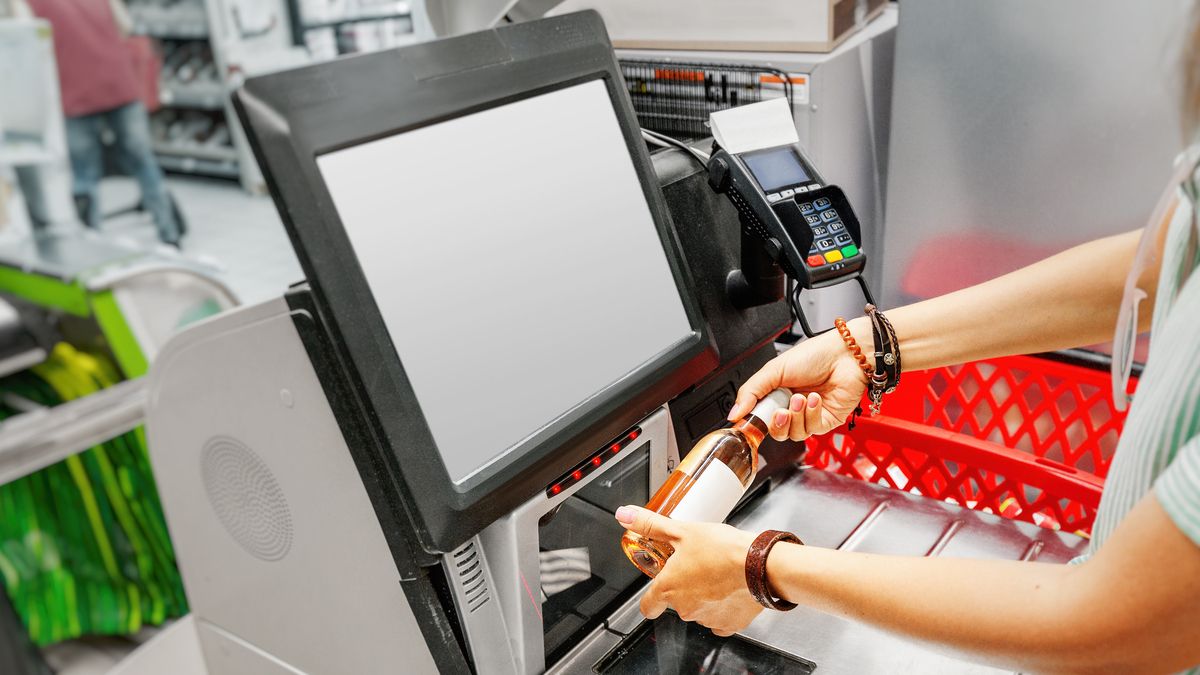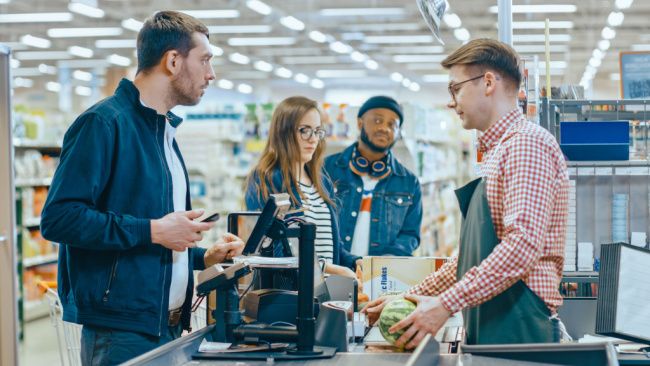Quick Links
We live at a time where you can walk into a store, grab some items, and pay without ever interacting with another human. Despite how awesome that sounds, self-checkout has its haters. Let me tell you why it's great.
If you look around the internet, you might think everybody hates self-checkout. In fact, that's literally what some headlines claim. The annoyances with self-checkout are well-documented. I'm here to defend the humble self-checkout machine and maybe provide a viewpoint you haven't heard.
New Technology Is Held to Unfair Standards
People have a tendency to be resistant to new technology if it's not perfect. For example, one problem with LED traffic lights is they don't get warm enough to melt snow, which sometimes results in covered lights during snow storms. This issue has prevented the adoption of LED traffic lights in some areas.
The YouTube channel Technology Connections has an excellent video on this topic. As Alec says, LED traffic lights are more energy efficient, cost less to operate, require less maintenance, are more capable of working with a battery backup, last longer, and are easier to see, but sometimes they get covered in snow. So, some people don't think we should make the switch.
New problems introduced by new technology should not outweigh the existing problems of older technology. Melting snow is not a "feature" of incandescent traffic lights; it's a byproduct of being terribly inefficient. We should focus on solutions for the new problems---which there are---rather than continuing to live with the problems of the old ways we've come to accept.
Self-checkout machines are not perfect. I've had my fair share of bad experiences with them too. However, there are clear advantages over human cashiers, and the new annoyances they've presented shouldn't cloud that.
The Case for Self-Checkout
Despite what the internet says, there are plenty of people that love self-checkout. I prefer it, and I often see more people in line for self-checkout than cashiers. Why is that?
First of all, self-checkout is best when you don't have a ton of items. This is actually what self-checkout is intended for in most situations. I love being able to grab a few items at Target and scan them myself. It's much quicker than waiting for a cashier to scan them for me.
Checking out at a grocery store is not like ordering a coffee. I wouldn't be able to make a latte as well as the barista, but I'm fully capable of scanning bar codes, putting items in bags, and using a credit card reader. It makes more sense to do it myself and involve another person if I need help, rather than always having a middleman in the process.
Self-checkout also allows for more checkout lanes in stores, which can greatly improve how quickly people get in and out. Most grocery stores can fit up to six self-checkout machines in the space that would normally take one or two human cashier lanes.
In general, I prefer self-checkout because it feels like a more frictionless experience. There are fewer obstacles and interactions between finding the items I need and leaving the store. Yes, self-checkout doesn't always work smoothly, but I don't throw out all the positive experiences because of those "sometimes" experiences.
What About the Jobs?
We can't talk about this topic without mentioning one of the biggest concerns---jobs. People say self-checkout machines take away jobs, and that's a common complaint for any machine that can replicate a human's job. Is it true in the case of self-checkout, and should we care?
Cashier jobs are expected to decline around 10% in the next decade, but new jobs are being created. First, someone needs to service those self-checkout machines when they inevitably misbehave. However, those jobs are not a one-to-one replacement as they require a completely different set of skills.
A better comparison is curbside pick-up and delivery. Nowadays, it's common for grocery stores to have employees fulfilling curbside pickup orders. Those jobs would have most likely been cashiers in the past. There are also fleets of Instacart and Shipt drivers making deliveries, but "gig economy" jobs are harder to rely on for a steady income.
One important thing to consider is the quality of cashier jobs. According to the U.S. Census Bureau, cashiers were among the lowest-paid members of the retail workforce. Plus, they often have their hours limited so they're not eligible for benefits. It seems grocery stores aren't too keen on paying cashiers, which is arguably a bigger problem than self-checkout machines.
We should aspire for a society where we don't pay people unlivable wages to perform jobs that can be done by a machine. Admittedly, it's a bumpy road to get there. People need money to survive, and sometimes you don't have the luxury of finding a better job. It's a lose/lose situation, unfortunately.
Self-Checkout Is Here to Stay
For better or worse, self-checkout is here to stay. We'll only see more self-checkout lanes in grocery stores and kiosks at fast food restaurants. Just like mobile payments, the experience is getting better, slowly but surely.
As mentioned, self-checkout is usually intended for less than 15 items, but I've noticed more self-checkout machines for more items. Some stores now have self-checkout machines with conveyor belts and handheld scanners. Plus, I have found the alerts for placing items in the bagging area to be much less frequent than they used to be.
As an aside, if your main annoyance with self-checkout is the obvious cameras in your face, well, I've got news for you: You're not going anywhere in a grocery store without a camera on you.
Self-checkout machines are a modern convenience. Sure, they're not perfect, but neither is the smartphone in your pocket. The future is never as clean and perfect as we imagine it to be. Amazing advances in technology always come with their own new set of problems. The humble self-checkout machine is no different.





